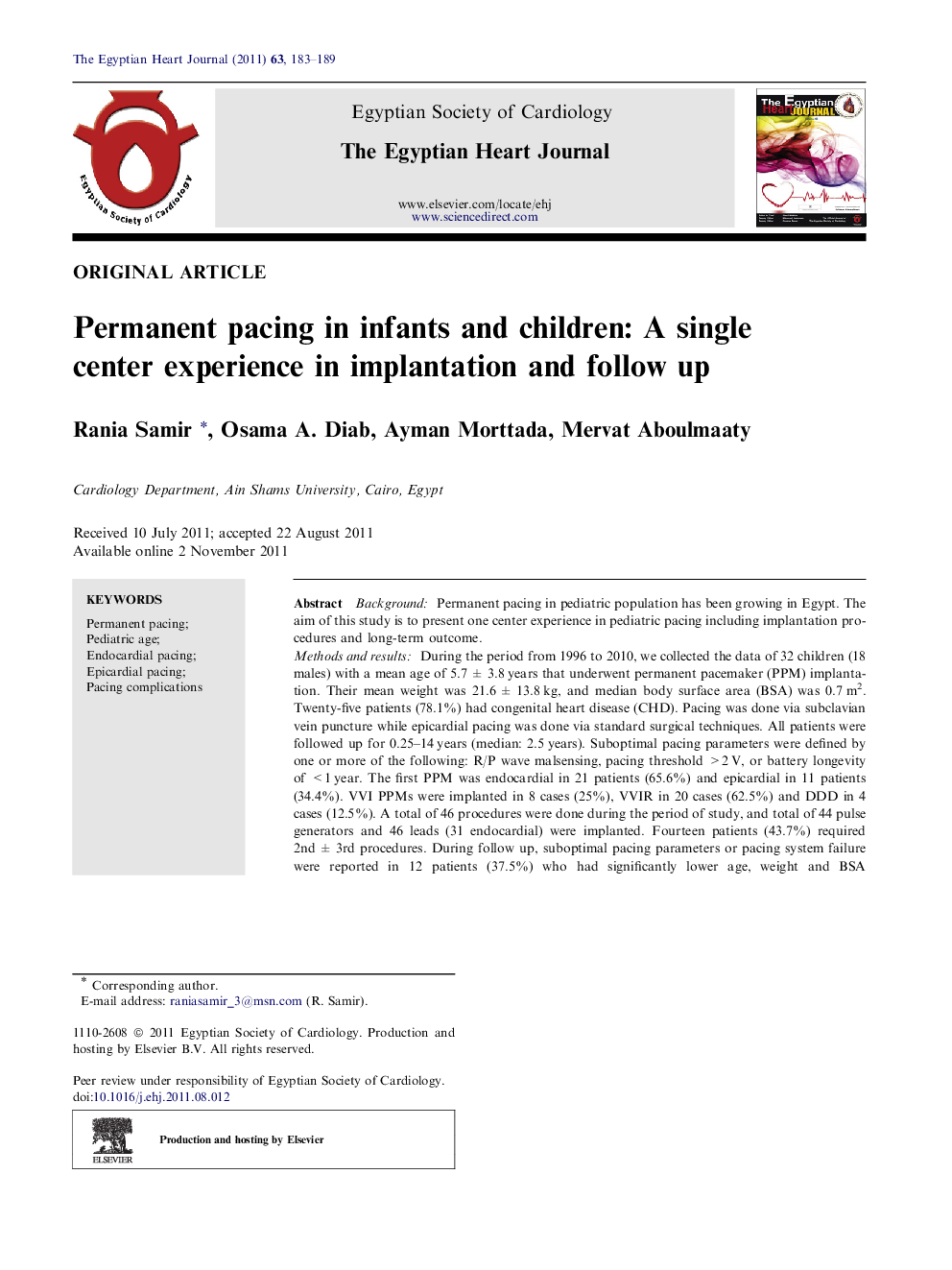| Article ID | Journal | Published Year | Pages | File Type |
|---|---|---|---|---|
| 2910787 | The Egyptian Heart Journal | 2011 | 7 Pages |
BackgroundPermanent pacing in pediatric population has been growing in Egypt. The aim of this study is to present one center experience in pediatric pacing including implantation procedures and long-term outcome.Methods and resultsDuring the period from 1996 to 2010, we collected the data of 32 children (18 males) with a mean age of 5.7 ± 3.8 years that underwent permanent pacemaker (PPM) implantation. Their mean weight was 21.6 ± 13.8 kg, and median body surface area (BSA) was 0.7 m2. Twenty-five patients (78.1%) had congenital heart disease (CHD). Pacing was done via subclavian vein puncture while epicardial pacing was done via standard surgical techniques. All patients were followed up for 0.25–14 years (median: 2.5 years). Suboptimal pacing parameters were defined by one or more of the following: R/P wave malsensing, pacing threshold >2 V, or battery longevity of <1 year. The first PPM was endocardial in 21 patients (65.6%) and epicardial in 11 patients (34.4%). VVI PPMs were implanted in 8 cases (25%), VVIR in 20 cases (62.5%) and DDD in 4 cases (12.5%). A total of 46 procedures were done during the period of study, and total of 44 pulse generators and 46 leads (31 endocardial) were implanted. Fourteen patients (43.7%) required 2nd ± 3rd procedures. During follow up, suboptimal pacing parameters or pacing system failure were reported in 12 patients (37.5%) who had significantly lower age, weight and BSA (P = 0.048, 0.023, and 0.032, respectively). The overall battery survival was 60% at 125 months, and ventricular lead survival was 63% at 125 months, with no significant difference in survival between epicardial and endocardial leads (P > 0.05).ConclusionPermanent pacing in pediatric age group is relatively safe. However, there is substantial higher incidence of suboptimal pacing parameters and pacing system failures especially in younger and smaller children. Epicardial steroid eluting leads are comparable to endocardial steroid eluting leads in performance.
